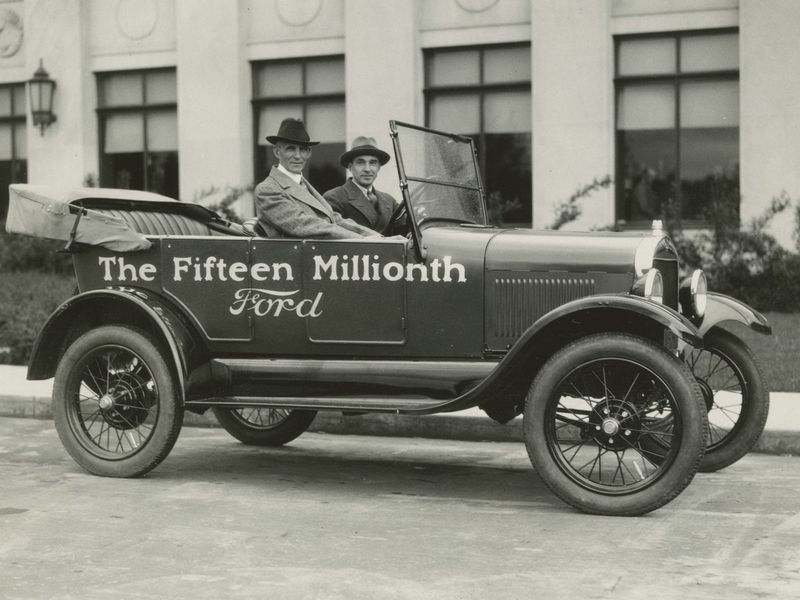
The last Model T, the car that put the masses behind wheels, is produced on May 26, 1927, with Henry Ford and his son, Edsel, driving the last one off the assembly line.
The Model T was billed as the universal car — “the motor car for the great multitude” — that Henry Ford envisioned for years. While other manufacturers at the time focused on luxury cars for the wealthy, mostly for recreation, Henry Ford wanted a utilitarian car “large enough for the family but small enough to run and care for.”
It combined low weight — about 1,200 pounds — simplicity and durability with a reasonable price of $850. Fuel efficiency was decent for the day — about 13 to 21 mpg — and it could travel up to 45 mph.
Ford initially used vanadium steel, a metal that only French luxury cars featured at the time, to give the Model T greater durability. It was capable of navigating rough ground, since the few roads at the time were relatively poor. The simple 20-hp engine and two-speed, foot-controlled planetary transmission could be repaired with a blacksmith’s tools.
The Model T — dubbed the “Tin Lizzie” — was engineered and designed to be versatile and reconfigured for multiple purposes: hauling cargo, postal delivery — even cutting grass.
The car was an immediate hit, posting sales of more than 10,000 in its first year, a record for an automobile at the time. Since its introduction in 1908, Ford produced some 15 million Model Ts. Black was the only color the Model T came in from 1914 through 1925, mostly because black was the only color paint that dried quickly, and speed and efficiency were key to maintaining enormous demand and production volume.
More than any other vehicle, the relatively affordable and fuel-efficient Model T jump-started the automobile’s introduction into American society during the first decades of the 20th century. And Henry Ford was proud of every last one.
“It had stamina and power,” Ford boasted on May 25, 1927, announcing plans to discontinue the model the next day. “It was the car that ran before there were good roads to run on. It broke down the barriers of distance in rural sections, brought people of these sections closer together and placed education within the reach of everyone.”